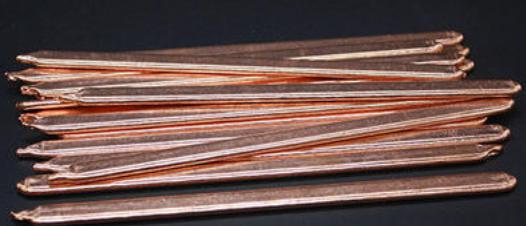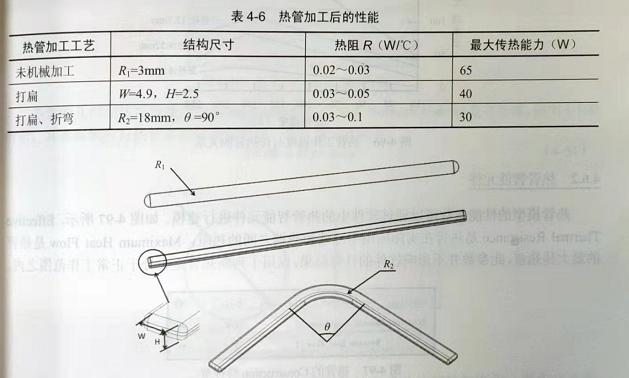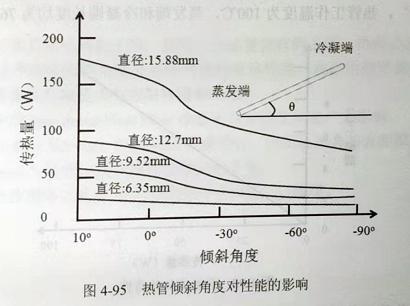
The use of heat pipe is a commonly used means of heat equalization, but due to the influence of the volume and structure of the product, it is often necessary to install the heat pipe in the limited space, usually flatten and bend the heat pipe, but these two methods will affect the heat transfer of the heat pipe.
And the larger the bending angle of the heat pipe is, the worse the heat transfer is, and the thinner the thickness after flattening is, the greater the thermal resistance is. What is the specific impact?

The picture above shows the data after the heat pipe is flattened and bent
So in actual use, we can not beat flat, do not beat flat, reduce bending.
In addition, the installation angle of the heat pipe will also affect the heat transfer. As can be seen from the following figure, when the heat pipe is below 6mm, the tilt angle has little effect on the heat transfer, but when the diameter of the heat pipe increases, the larger the diameter of the heat pipe, the greater the influence of the installation angle on the heat transfer.

The following is the heat transfer of different diameters of heat pipes. There is a convenient formula for estimating heat transfer of heat pipes (heat transfer = square of heat pipe diameter). Although the algorithm is not accurate, sometimes it can be used to estimate the heat dissipation effect.

In the process of practical engineering application, it is often necessary to bend the heat pipe. To what extent can it be bent?
The following table is for reference.

















